#Disney acquiring Doug was a bad idea
Text
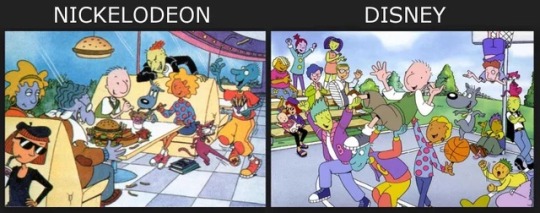
Hello Doug fans, you should know that Doug isn’t just one show, it’s two separate shows.
#Doug#nickelodeon doug#Disney Doug#it isn’t one show it’s two separate shows#trust the nick version#the Disney version isn’t funny!#Disney acquiring Doug was a bad idea
1 note
·
View note
Text
All the streaming services, ranked
CLOSE

If you’re struggling with which streaming service suits your needs,
here are the pros and cons of the biggest brands.
USA TODAY
Welcome to the era of the Streaming Wars.
Hollywood is getting more crowded than ever as two new online streaming services, Apple TV+ and Disney+, join the digital fight for your eyeballs and money in November. And there’s still more to come: Next spring, WarnerMedia’s HBO Max and Comcast’s Peacock join the mix.
With Netflix, Hulu and Amazon already dominating the streaming world, and smaller players like CBS All Access, Shudder and Acorn TV fighting for their place in the mix, the new TV landscape can be a daunting avalanche of choices, and subscribing to every new service can easily end up costing more than that cable bill you already cut.
But not all streaming services are created equal. Before you subscribe to the latest, consider our list of the major services, ranked from best to worst. We’ve included only services not available as a cable channel (sorry, HBO Now), and those streaming in 2019 (we’ll get back to HBO Max and Peacock later).
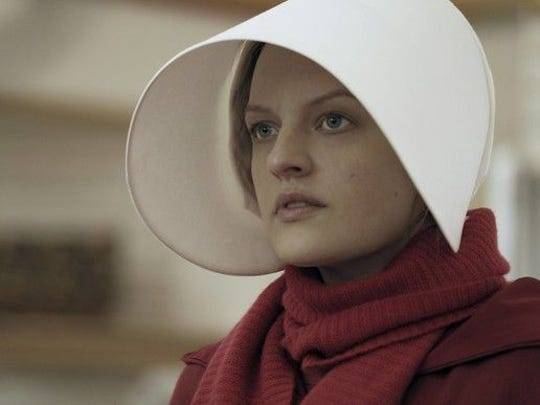
The Handmaid’s Tale was Hulu’s first breakout hit. (Photo: Hulu)
1. Hulu
Cost: $5.99/month with ads; $11.99/month commercial-free
Originals: A mix of award-winning high profile dramas (“The Handmaid’s Tale,” “The Act”), tiny, quirky and acclaimed comedies (“PEN15,” “Shrill”) and occasional theatrical or streaming-only films (“Little Monsters,” “Fyre Fraud”).
Library: Includes currently airing TV shows on ABC, NBC and Fox (“The Masked Singer,” “Stumptown”) paired with archival series (“Buffy the Vampire Slayer,” “Designing Women,” “Seinfeld”) and films (“Boyz n the Hood”).
Kid-friendly? A robust kids’ section has mostly older shows (“Sailor Moon,” “Doug”) but a few originals like “The Bravest Knight.”
Hulu tops our list because it’s a broadly appealing service that offers plenty of genres and styles without scraping the bottom of the barrel for new content. The ability to watch current broadcast shows in-season is a huge advantage. And Hulu has the best selection of archival TV series with a solid showing of films, too. Its originals could be better, but the service has wisely chosen not to overload us with shoddy new programming, a mistake its biggest competitor, Netflix, has unfortunately made. Hulu’s value is likely to grow in the next few years, now that Disney effectively owns the service. Adult Marvel content will likely gravitate here, along with a trove of FX series.
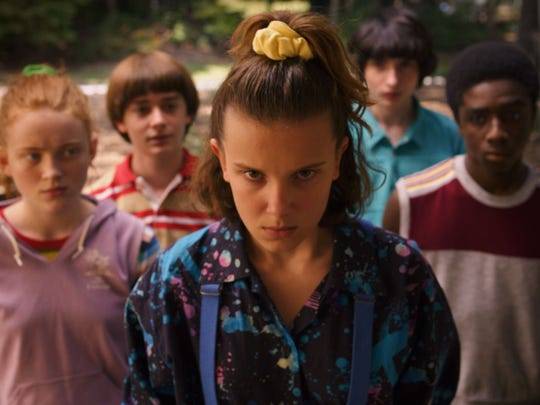
Sadie Sink, Noah Schnapp, Millie Bobby Brown, Finn Wolfhard, and Caleb McLaughlin in Stranger Things 3 . (Photo: Netflix.)
2. Netflix
Cost: $8.99/month to watch on one screen at once, $12.99/month to watch on two screens or $15.99/month to watch on four screens in Ultra HD.
Originals: Has the largest crop of originals, which means the biggest mix in quality as well. Notables include “Stranger Things,” “Queer Eye” and “The Crown,” in addition to Oscar-bait movies like Martin Scorsese’s “The Irishman.”
Library: Shrinking every year. Although some stalwarts remain on the service (“Breaking Bad,” “Dexter,” “Supernatural”), Netflix is investing in originals, not in holding onto the rights for legacy series and films. (“Friends,” “The Office” and “Parks and Recreation” are among those shifting elsewhere by 2021 for U.S. subscribers).
Kid-friendly? Netflix’s kids’ section is massive, populated mostly with dozens of originals (A “Boss Baby” series, an upcoming “Green Eggs and Ham” adaptation) and some library content (“Pokemon”).
Netflix may be synonymous with the idea of streaming content, but while it pioneered the format, it hasn’t perfected it. The service has a huge number of films and TV shows to choose from, but that library isn’t as good as it once was. Netflix’s biggest flaw is that it is abandoning its archival content in favor of an ever-more-mediocre slate of originals across all genres of TV and film. Some of these series are brilliant (“The Crown,” “BoJack Horseman”), others are decent (“Queer Eye”), but most are poor facsimiles of better TV (“Ozark,” “Fuller House”). The movies that premiere on the service without a theatrical run (and thus, aren’t vying for Oscars) have a distinct “TV movie” vibe. Still, Netflix is a really valuable service and the biggest name in the game, only slightly edged out by Hulu.
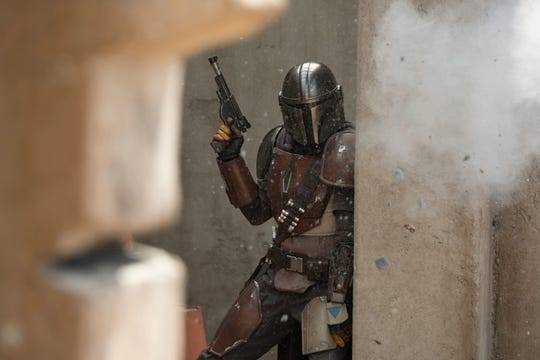
Pedro Pascal stars as the title character in the new Disney+ series, “The Mandalorian.” (Photo: Francois Duhamel, Lucasfilm Ltd.)
3. Disney+
Cost: $6.99/month or $69.99/year (available Nov. 12)
Originals: The first Star Wars live-action series (“The Mandalorian”), teen comedy “High School Musical: The Musical: The Series,” “Toy Story” spinoff “Forky Asks a Question” and a slew of nonfiction series. More Star Wars and Marvel series are promised over the next few years.
Library: The Disney Vault has opened, and classics (“Snow White and the Seven Dwarfs”) and duds (“The Shaggy D.A.”) alike will flood the service, along with recent blockbusters (“Avengers: Endgame”) from the studio. Some titles inherited from the merger with 20th Century Fox (“The Simpsons”) also are available.
Kid-friendly? Extremely. All content on the service is family friendly to some degree, to fit with the Disney brand.
The biggest threat to existing services comes from the biggest conglomerate in Hollywood. Disney is flexing its considerable muscle by offering its classic films paired with original series from its biggest brands: Star Wars, Pixar and Marvel. Its huge library is its biggest advantage, as is the ability to reboot and revive (“Lizzie McGuire,” here we come). But the biggest disadvantage is the lack of diversity in programming. Everything here will be very Disney in tone and style, and the service has no plans for mature programming and mindless reality TV, which has its time and place. If you have kids, the value of the service goes up exponentially, but for those of us not trying to entertain tykes, other streamers have more to choose from.

Phoebe Waller-Bridge takes a smoking break as the titular character in Amazon’s “Fleabag.” (Photo: STEVE SCHOFIELD/AMAZON)
4. Amazon Prime Video
Cost: $12.99/month, but comes with free two-day shipping
Originals: “Jack Ryan,” “Bosch,” “The Marvelous Mrs. Maisel” and lots of small, awards-friendly fare, a lineup that’s changing rapidly as the company embraces genre shows like an upcoming “Lord of the Rings” series.
Library: A wide assortment that most notably includes Masterpiece dramas(“Downton Abbey”), mid-2000s procedurals (“The Closer,” “Bones”), USA Network shows (“Mr. Robot,” “Suits”) and some older HBO programming.
Kid-friendly? Yes, Amazon includes originals like “Kung Fu Panda” and Nickelodeon series like “SpongeBob SquarePants” and “Dora the Explorer.”
Amazon’s TV output is perfectly acceptable, especially if you like quaint British television and series your grandparents will enjoy. The streamer excels at comedies (Emmy-winning “The Marvelous Mrs. Maisel” and “Fleabag”) and has an impressive selection of British TV (“Doctor Who,” “Broadchurch”). Its library of old series and originals is not as big as Hulu and Netflix, but it does have Oscar-nominated films (“The Big Sick” and “Manchester by the Sea”) acquired from festivals. Your money goes further, because it pays for two-day shipping with TV as a bonus, but it still offers a higher proportion of niche programming than its rivals. Unlike Netflix or Hulu, it can’t replace your cable subscription all on its own, but its lineup will expand to include a fashion series from Tim Gunn and Heidi Klum and an expensive “Rings” adaptation.
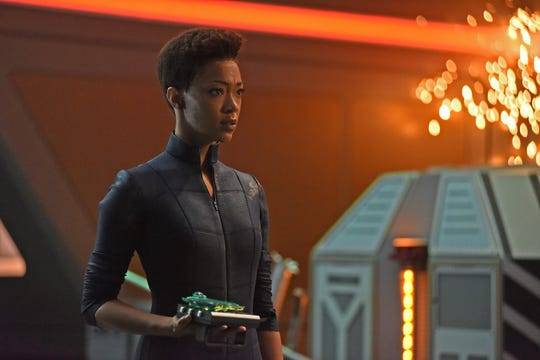
Sonequa Martin-Green returns as Michael Burnham for a third season of “Star Trek: Discovery.” (Photo: JOHN MEDLAND/CBS)
5. CBS All Access
Cost: $5.99/month with commercials, $9.99/month without
Originals: “Star Trek: Discovery,” “The Good Fight,” “The Twilight Zone,” “Why Women Kill”
Library: Current (and recent) CBS series, classics (“I Love Lucy”) and movies (“Rocky”).
Kid-friendly? Some library content like “Sabrina the Teenage Witch” and “Everybody Hates Chris,” but nothing for preschoolers and no originals.
Don’t knock the Eye’s streaming service until you’ve tried it. It’s a little on the expensive side for the number of originals, but its streaming shows have a better batting average when it comes to quality (“The Good Fight” is one of the best shows on TV). In addition to CBS shows, its library includes a treasure trove of classic films and TV, such as “Happy Days” and “The Brady Bunch.” However, it’s still limited in scope, so seeing some episodes of “Star Trek: Picard” a few times a year may not be worth the expense.
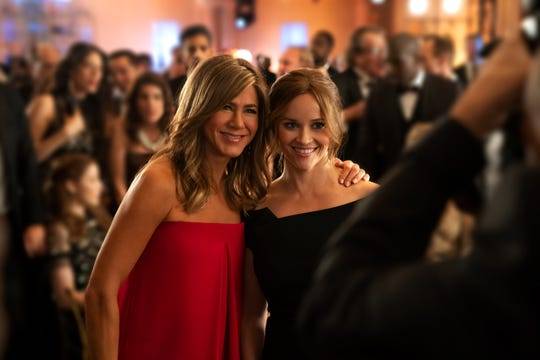
Jennifer Aniston and Reese Witherspoon star in the new Apple TV+ series “The Morning Show.” (Photo: Apple)
6. Apple TV+
Cost: $4.99/month; free for one year with purchase of an Apple product (available Nov. 1)
Originals: “The Morning Show,” “See,” “For All Mankind,” “Dickinson,” “The Elephant Queen,” “Oprah’s Book Club,” and other new shows from M. Night Shyamalan and Steven Spielberg.
Library: None
Kid friendly? Nope
Despite its low price tag, Apple has a distinct disadvantage in value because it has no back library of classic shows or films. You could burn through their entire new catalog in a few weeks. And you wouldn’t get much from binge-watching the new series, which include “The Morning Show,” a mediocre soap starring Jennifer Aniston and Reese Witherspoon. The best of the bunch is alternate history drama “For All Mankind,” from the creator of “Battlestar Galactica,” but is it worth the money to see just one maybe-good show? Probably not.
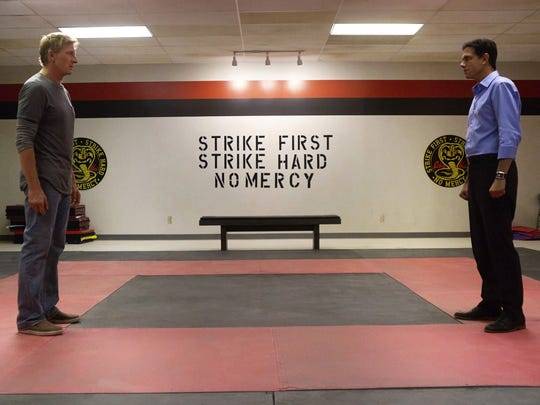
Three decades after “The Karate Kid,” Johnny (left, William Zabka) and Daniel (Ralph Macchio) face off again in “Cobra Kai.” (Photo: YOUTUBE RED)
Honorable mentions: AcornTV, Britbox, Shudder, YouTube and Facebook Watch
A few other, much smaller streaming services are vying for your wallet. AcornTV and BritBox are for serious Anglophiles (Acorn has more mysteries, Britbox has all of classic “Doctor Who”). Shudder is devoted to horror. Facebook Watch and YouTube are a mix of user-created and professional content. Facebook Watch has one good original series (“Sorry for Your Loss” starring Elisabeth Olsen); so does YouTube (“Karate Kid” sequel “Cobra Kai”). Facebook Watch is free if you have time for it, and YouTube also has a free tier, with ads.
Autoplay
Show Thumbnails
Show Captions
Last SlideNext Slide
Read or Share this story: https://www.usatoday.com/story/entertainment/tv/2019/10/29/apple-tv-netflix-disney-all-streaming-services-ranked/2484448001/
Sahred From Source link TV and Movies
from WordPress http://bit.ly/2PqPNhv
via IFTTT
0 notes
Text
Narratology Week 4 Hero’s Journey
These are the notes I took during the lecture
This narratology lesson we, learned about “The Hero's Journey” by Christopher Vogler in “The Writer’s Journey: Mythic Structure for Writers”. We also looked at John Yorke’s 6 reasons why we tell stories. We also looked at Booker’s The Seven Basic Plots.
Proppian Analysis
Fairy tales always have a simple, moral based universe. Lots of fairy tales could begin where the hero lacks or desires something, the acquisition of this object may bring happiness or sadness, depending on the existing moral character of the person who acquires it. It is also stated a lot that lessons become learnt, karma comes in the end to teach that lesson. The good stay good and the bad stays bad. The end of fairy tales always ends happily.
Although we know real people are much more complex, we learned about how characters desires are usually driven by deep complex psychological reasons. In Propp we identify the hero as the person who suffers the act of villain or agrees to take counter action against the villain. This could be compared to Vogler and his identification of the hero being based on action and sacrifice. It is increasingly common for the protags to begin that story with some kind of flaw or ‘ psychic wound‘ that defines their character. This ends up with the need to be corrected, healed or redeemed at some point being resolved before the end of the story. (Lengsfield 2016)
For example, we can talk about how Batman has these flaws that defines him and his moral code, he doesn’t overcome it for a long time but it is always there to make him vulnerable.
John Yorke calls this three dimensional storytelling, Yorke also talks about why we tell stories. He gives 6 reasons.
· The rehearsal reason, the brain is like a muscle, getting stronger by practising difficult scenarios and how to avoid them. Neuroscience has found that your brain brings you through and reflects the activity you have seen which allows you to empathise with the character.
· The healing reason, this is where watching the character healing his or her flaws would help us heal our own flaws, like earlier with the brain reflecting what you see, you may also receive comfort when the hero’s problem is resolved.
· The information retrieval reason, your brain does a job remembers the information better through a story rather than if it was just bullet pointed in text, also linking back to parts of the brain that ar3e activated through listening to a story.
· Panacea reason, stories with happy endings give us hope, even history can be rewritten to suggest a sense of order and justice.
· The Procreation reason, where the story ends in a sexual union or its symbolic manifestation through marriage, encourages people to continue the species, this happens a lot in fairy tale.
· Psychological reason, stories separate disparate parts of our own psyche into external characters: they play out a process of integration- helping us to achieve this: overcoming our own shadows, our own deep flaws and giving up on our shallow ego driven wants and understand what we need.
This is why change is important, the external circumstances change, as well as people’s psychological core, suggesting on how society can only truly survive and grow through change.
‘Stories carry in their DNA a blueprint for survivial’ (Yorke, 2013, p.203)
Stories change us and then we go off to change society.
Everything in life has opposites; contradiction, these are essential for change to occur, truth can only be achieved by opposition. One idea is presented, challenged by an antithesis and then a new thesis (synthesis) is born. Everything that moves constantly changes through contradiction. Everything within itself has an opposite. (Philosopher Hegel)
“What is your character good at, through the polar opposite at the, challenge them, how do they deal” Rule 6 of Disney’s rules of storytelling.
In the course of the story, someone is changed, this defines a plot of resolution in which a basic narrative is posed with a “what will happen” and it is then later resolved.
We also got taught about the plot of revelation where we can divide story content into two separate strands, existents(Characters and setting), these are can have infinite detailing and events(actions and happenings) which takes a lesser role.
So with all of this in mind, we were asked if the Hero’s Journey character oriented, the answer is yes. But in revealing the character it usually seeks to resolve a fundamental flaw or wound.
Going back to Joseph Campbells hero with a thousand faces where the hero goes on a journey, learns something or great importance etc. which lays down a fundamental way of storytelling across all cultures.

Here is the visual representation of Vogler’s Hero’s Journey, this is broken down into 12 stages, broken into 3 acts, Separation, Descent and Initiation, and then Return. Unlike Propps version, you are likely to see most if not all of these functions.
As you can see here there is a midpoint in act two, it can be serving as the big twist of the story before the story peaks at the start of Act 3.
1. Heroes are introduced in the ordinary world, where they are about to become a “fish out of water” as a strange new world approaches, creating a vivid contrast.
2. After this, the hero receives a call to adventure, usually due to the herald sending the hero on that journey. Having the hero realise that he can not refuse the call and can no longer live in that ordinary world.
The next 2 may not be present in all stories.
3. If the story features a reluctant hero, there could be a refusal of the call or at least expresses reluctance. This would happen when the hero balks at the threshold of adventure. Humans are naturally conservative, always showing reluctance to release themselves from the status quo. Only certain stimuli such as a revenge driven drive or encouragement from a mentor would get them on a journey.
4. A mentor would have been met to teach the hero to face the unknown, not all mentors are possible role model, but all will teach the hero either flaws on themselves or would give advice or magical equipment. This might not be the first time that they meet the mentor, but it will be the first time that they offer guidance.
5. The hero would then start to cross the first threshold, this is the point of no return, where the character is pulled into the story and there is no way they can turn back now. This is where the adventure really gets going.
6. Once the hero has crossed that threshold, the hero comes across tests, allies and enemies. This is also where they are going to learn the ropes of the new world and where they start to show their metal as a new hero.
7. At this point, the hero would approach the inmost cave, crossing the second threshold. This is heading towards the midpoint to the story. Where the object of interest or the quest is hidden, the hero makes preparations to enter the inmost cave and this is where we reach the midpoint.
The next two points might be when the hero actually earns that title.
8. This is the ordeal, where the fortune of the hero reaches rock bottom, and a direct confrontation of their greatest fear, the audience is held in suspense where the answer is unknown to whether the hero will live or die.
9. This is when the hero takes possession of their reward, (seizing the sword), where the treasure is now in possession of the hero. It doesn’t have to be literal, it could be important knowledge or experience.
10. The hero takes the road back, where the hero is not out of the woods yet, they may have overcome the villain but they still need to get back. The hero may be pursued by vengeful forces, undergoing a spiritual death. The hero realises that they can’t stay in this world forever, they need to return to the ordinary world. It doesn’t have to be literal.
11. This is the final threshold, where the final test of the hero confronts them to see if the hero has really learned the lesson of the last ordeal, where the hero is fully transformed by this experience.
12. The hero the returns to the ordinary world with the treasure, elixir, or lesson from that special world to benefit the ordinary world.
This all talks about the change the hero goes through, where the hero becomes a new person. The midpoint is where the new truth dawns through upping the stakes and intensifies the action. This is the point where the hero stops trying to avoid the problem and then focuses on trying to deal with it.
After this we did an activity regarding the movie UP that we watched last week and made a synopsis on. We used the hero’s journey that we just identified each stage in up as to where each plot point falls into.
Exposition -This Is the point where the prologue happens, meeting Ellie and spending his life with her.
The call to adventure – Ellies dream of going to paradise falls.
The refusal is how he waited so long, to the point where Ellie died and he would no longer be able to go with her.
The meeting of the mentor – Russel shows up and subliminally reminds Carl of his younger days as an explorer and his energy of ellie.
Crossing the first threshold -The hitting the construction worker, forcing Carl to have to go to a retirement home, encouraging carl to start his adventure before this happens, the balloons go up and there is no turning back now.
Tests allies and enemies – Turns out Russel was on the porch Carl makes a new ally, lands in paradise falls and meets Kevin and Doug, who challenge his patience.
Approach to this inmost cave – Carl flees from Charles Muntz, sacrifices the bird for the house, they get to paradise falls and Russell is upset and flees to save the bird.
The Ordeal – Carl realises that Ellie had an adventure with him all along and wanted Carl to make his own adventure. Carl regrets his decisions and heads off to save Russell, Kevin and Doug.
The reward – This is when Carl find finds Russel, Kevin and Doug, and gets rid of Muntz
The road back is Muntz and Charles final fight and the allies retreat to the house.
The Resurrection, Carl defeats Muntz and lets go of the house as a form of closure to save his friends.
Return with Elixir, bringing Russell back being a father figure to Russell and passing on the mantel of explorer through the Ellie badge to Russell, learning his valuable lesson that his life was an adventure all along.
One of the morals of this was that characters don’t always get what they want, they end up getting what they need instead. For example, a hero would want to get with a hot blonde but in the end she wont be right for him ,what he needs is a fulfilling relationship with the shallow girl next door.
Just like in this, Carl wants the house to be at Paradise falls, but what he finds out he needs is to stop clinging to the past and realise he can have adventures at home.
In two dimensional stories, protagonists don’t change. (Yorke 2013, p.62) This is important to bear in mind when watching a film franchise or tv series, week after week, it will need to be the same character, otherwise the identity is lost. It would need to be a more gradual change and the final flaw would be resolved by the end.
Vogler calls this the Catalyst Hero. This is a certain class of hero that instead brings about the change in something or somebody else, without changing too much themselves.
The 7 basic plots (Booker,2004)
Overcoming the monster – The protagonist must defeat an antagonistic force which threatens the protagonist or their homeland.
Rags to riches – The poor protagonists acquires things such as power, wealth and a mate before losing it all and gaining it back upon growing as a person.
The quest – The protagonist sets out to acquire an important object or to get to a location facing many obstacles and temptations along the way.
Voyage and return – the protag goes to a strange land and after overcoming the threats it poses to him/her returns with nothing but experience. At first they are looking for adventure but the new world becomes a frightening or dangerous place, and they start to long for home again.
Comedy- Light and humours with a happy and cheerful ending; the central motif is the triumph over adverse circumstance, resulting in a successful or happy conclusion.
Tragedy – the protag is a villain who falls from grace and whose death (spiritual or literal) is a happy ending.
Rebirth – The protagonist is a villain or unlikeable character, or he or she redeems him/herself over the course of the story.
We then went on to look at “Less Conventional Narratives”
Remember that animation doesn’t have to tell straightforward stories.
‘Traditional animation tends to imply that it is a film that tells a story through moving drawings and contains what has been called personality animation with which the narrative’s protagonists are imbued.’ (Pilling, 2011)
But experimental animation can be more like graphic art in motion than storytelling.
We also were taught about Wells’ 7 Signposts of experimental animation
Abstraction – Might use shapes and forms rather than traditional characters. Move about in rhythm and movement in their own right.
Specific Non-Continuity – Rejecting logical linear continuity, preferring illogical and irrational and sometimes multiple continuities.
Interpretive form – Subjective experience rather than objective, things as they are experienced rather than the literal event itself. Animation is really good at doing this because it can represent the sensory experience that live action wouldn’t be able to capture. And ‘give pleasure in their own right.’
Evolution of Materiality – Concentrates on its very materiality, i.e. what is it made of. Colour, shape and texture ‘evoke certain moods and ideas’
Multiple styles- Freely combines styles and techniques to best express the artists ‘vision’ and ‘challenge and rework orthodox codes and conventions’.
Presence of the artist – These films are personal and subjective. Trying reflect and absolutely individual vision. May seem impenetrable and resist easy interpretation.
Dynamics of musicality – Music becomes very important in experimental films which may resist dialogue. Trying to make visual music.
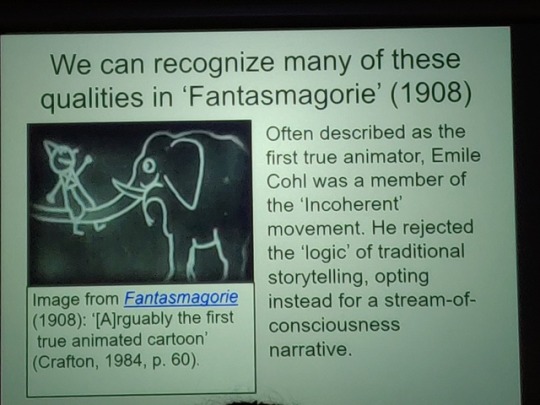
We looked at the film fantasmagorie (1908)
Emile Cohl, rejected the logic of traditional story telling opting instead for a stream of conscious narrative. At the time, films were merely adaptations of comic strips.
Animation quickly became associated with jokes and gags. Audiences came to animation for its ‘entertainment value’ (Wells)
“Riffing” the term used by Gerald Mast in Film Theory and criticism for the technique used by short films in which gags take precedence over story.
0 notes